Cucumber "Boy with a finger" for greenhouses, open ground and home cultivation
Wonderful cucumber hybrid Boy with a finger lives up to its name: small, saturated color fruits have an attractive presentation. The hybrid was bred relatively recently, but is already popular with leading gardeners. Versatile: suitable for growing outdoors, in greenhouses and at home.
The content of the article
Description of cucumbers
Boy with a finger - parthenocarpic hybrid early ripening, bred by the Russian breeding and seed company "Manul".
Reference! In parthenocarpic cucumbers, fruit development occurs without the participation of male germ cells, that is, without pollination. A distinctive feature of such cucumbers is underdevelopment or lack of seeds.
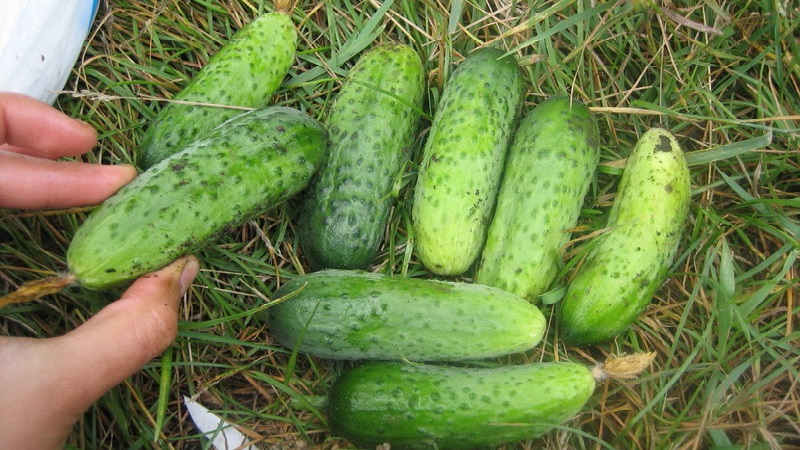
Distinctive features
Features of cucumbers Tom Thumb:
- it is a hybrid of the first generation (there is an F1 mark on the seed bag);
- high seed germination (95-100%);
- early maturity;
- long-term fruiting - more than 2 months;
- relative drought resistance;
- resistance to diseases and pests.
Composition, properties, benefits, calories
Cucumber is 95% structured water - eating fruits helps to flush the kidneys and cleanse the body of toxins, salts of heavy metals and slags.
Regular and moderate consumption of cucumbers has a beneficial effect on intestinal motility, the state of the thyroid gland, reduces the risk of developing cardiovascular diseases, and lowers harmful cholesterol.
Calorie content of cucumber: 15 kcal per 100 g of product.
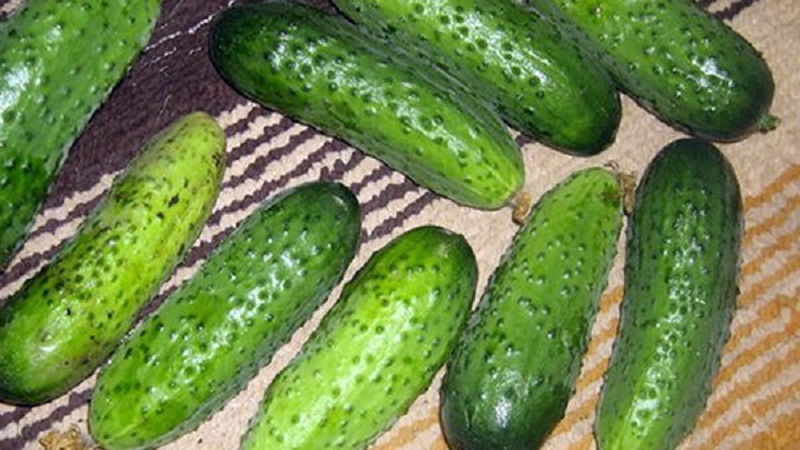
Specifications
Characteristics of cucumbers Tom Thumb:
- high yield - from 1 m² you can collect from 7 to 14 kg of fruits;
- bushes are tall, medium-growing, indeterminate (the growth of the main stem is not limited by the flower race), female flowering type;
- the leaves are green, slightly wrinkled, of medium size, the edge of the leaf has a weak waviness;
- from 3 to 5 ovaries are formed in one node;
- fruits of the gherkin type, 8-11 cm in length;
- fruit skin is green, thin, with weakly expressed short white stripes, frequent pubescence, pimpled surface, white thorns, thornless;
- the taste of the fruit is excellent - the pulp is fragrant, crispy, without bitterness;
- seeds are small, barely noticeable.
How to grow yourself
The hybrid is unpretentious in care, suitable for growing in any region, on different types of soil.
Planting by seed and seedling method
Cucumbers are grown by seedling and seed methods outdoors or in a greenhouse.
It is recommended to plant cucumbers in a permanent place after the soil warms up to 15 ° C.
Before planting seeds for seedlings or in the ground, they are soaked for a while in a weak solution of potassium permanganate.
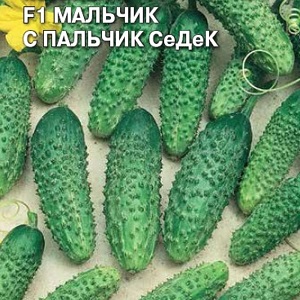 The prepared seeds are planted in open ground when the weather is warm, and the threat of night frost has finally passed. The soil is preliminarily prepared: mineral fertilizers are applied, loosened, all stones and dried roots are removed.
The prepared seeds are planted in open ground when the weather is warm, and the threat of night frost has finally passed. The soil is preliminarily prepared: mineral fertilizers are applied, loosened, all stones and dried roots are removed.
In the garden, grooves are made using a stretched cord. The distance between them should be at least 60 cm. Seeds are sown in holes filled with water and fertilized with manure to a depth of 2-3 cm.The distance between holes is 20-30 cm.
Seed germination is high, therefore, it is enough to place 1-2 seeds in each hole.
Seedling seeds planted in nutrient-rich soil, to a depth of 1 cm. Place the seed vertically in the ground.
Important! In order for the seeds to sprout quickly, they need to create comfortable conditions. To cover the ground with damp paper or napkin, creating a microsteam. After the first shoots appear, the napkin or paper is removed.
The optimum air temperature is 20-25 ° C.
Seedling care is simple: sufficient illumination, timely watering and maintaining air humidity.
As soon as the spring frosts ended and the earth warmed up, seedlings can be planted in a permanent place. The best time for central Russia is the last days of May.
Attention! For planting in the ground, seedlings that have grown to 20 cm and have at least 4-5 sheets are suitable.
The plant is removed from the seedling container carefully so as not to damage the small roots and fragile shoots. The distance between young cucumbers should be about 30 cm for free growth.
The planted seedlings create greenhouse conditions: watered and covered with a special covering material or an ordinary plastic bottle. So the root system adapts faster to new conditions.
After a week, the protective material can be removed and the cucumbers can be poured with nitrogenous fertilizers.
It can be useful:
What to do with barren flowers on cucumbers in a greenhouse
How and what to feed cucumbers for their record yield
The best varieties of shade-tolerant cucumbers for the greenhouse
In greenhouses and apartments
The procedure for planting in a greenhouse is the same as in open ground.... The soil is disinfected with a solution of potassium permanganate (in summer) or copper sulfate (in autumn). There are no more than 3 plants per 1 m². Humidity in the greenhouse should be about 80%.
Advice! Install support trellises for further growth and formation of the plant.
Watering plentiful and frequent: 3-4 liters for each bush every other day.
To grow cucumbers in an apartment, it is important to observe certain nuances. The land is taken at the rate of 5 liters for 1 stem. It is better to take the land with a peat-peat mixture or a specially prepared mixture purchased at a flower shop. If the weather is cloudy, it is advisable to provide the cucumbers with additional artificial lighting.
Important! The light period should be 12 hours.

Growing and care
For cucumbers install vertical trellises, pinching the main cucumber branch.
Water the plants with warm water... The most intensive watering is in hot weather, during flowering and fruit formation. Water in the morning or evening.
To maintain soil moisture, the roots are mulched cut grass or straw. Regular weeding and loosening of the soil is required.
In the first 2 weeks after germination in the open field or transplanting seedlings the plant is fed nitrogenous fertilizers... During the flowering period, cucumbers will need phosphorus-containing compounds. Foliar dressing is especially effective.
The fruits are harvested regularly, at least 3 times a week.
Attention! With poor fruit formation, the plant is fertilized with cow dung or humus.
Features of cultivation and possible difficulties
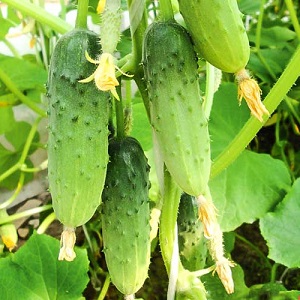 When growing a hybrid, a Boy with a finger perform mistakes that can lead to poor fruiting or no harvest:
When growing a hybrid, a Boy with a finger perform mistakes that can lead to poor fruiting or no harvest:
- improper ventilation of the beds;
- insufficient illumination;
- excess or lack of moisture;
- improper bush formation;
- untimely planting of seedlings in the ground or greenhouse;
- soil not enriched with mineral fertilizers;
- lack of feeding during the growing season;
- non-compliance with the landing pattern.
Important! You cannot plant cucumbers every year in the same places. This will significantly reduce the yield.
Diseases and pests
A hybrid is good because it is practically not susceptible to disease.... Resistant to powdery mildew, brown and olive spot, cucumber mosaic, cladosporiosis.
The only disease dangerous for a hybrid - downy mildew.
In order to prevent possible diseases and pest infestations, seeds before planting are treated with a manganese solution, regularly watered and fertilized the plant, sprayed with fungicides, remove weeds that can be carriers of infections.
Harvesting and application of the crop
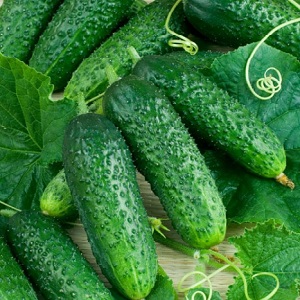 Fruiting begins 40 days after planting... Harvested from June to August. Harvesting must be regular. If you remove the fruits at least once every 2-3 days, fruiting will improve. Pluck the cucumbers carefully without damaging the stem. Fruits 7-11 cm in length are suitable for eating.
Fruiting begins 40 days after planting... Harvested from June to August. Harvesting must be regular. If you remove the fruits at least once every 2-3 days, fruiting will improve. Pluck the cucumbers carefully without damaging the stem. Fruits 7-11 cm in length are suitable for eating.
Fresh cucumbers at room temperature are not stored for a long time. It is better to eat them immediately or use them for salting, pickling.
So that cucumbers are stored for a long time or withstand long-term transportation, create conditions: a dark and cool place, but in no case humid. Cucumbers will be well stored in a dry cellar.
Advantages and disadvantages
The main advantages of the hybrid:
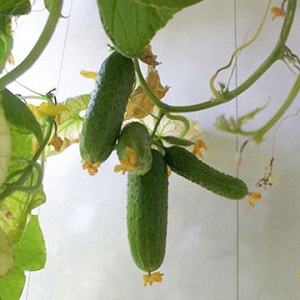 suitable for growing in all regions;
suitable for growing in all regions;- does not require pollination;
- excellent taste;
- high productivity and seed germination;
- early maturity and long-term fruiting;
- bouquet type of ovary;
- immunity to disease;
- drought resistance;
- universality of application.
The only downside to the hybrid - susceptibility to downy mildew.
Reviews
Gardeners speak favorably about the Boy with a finger hybrid, characterize it as fruitful and hassle-free.
Arina, Rostov-on-Don: “I have been planting a“ Boy with a Thumb ”cucumber for several years now. This hybrid is the best, I don't even consider others. The cucumbers are aromatic and crispy. Great for pickles, snacks and salads. They are not demanding in care. I plant it directly in open ground, the seeds germinate well. Photo of cucumbers on the package is true ".
Maria, Tula: “I usually read the description of the varieties of vegetables for the summer residence on the Internet myself, and this hybrid was advised by my relatives. I bought Dutch seeds, which have 100% germination. Grown in the country from May to September. Cucumbers love fertile soil and cannot tolerate direct sunlight. The first 2 weeks after planting used covering material. We planted 8 bushes, collected at least 60 kg of fruits for the whole season. Cucumbers were consumed fresh, some were salted ".
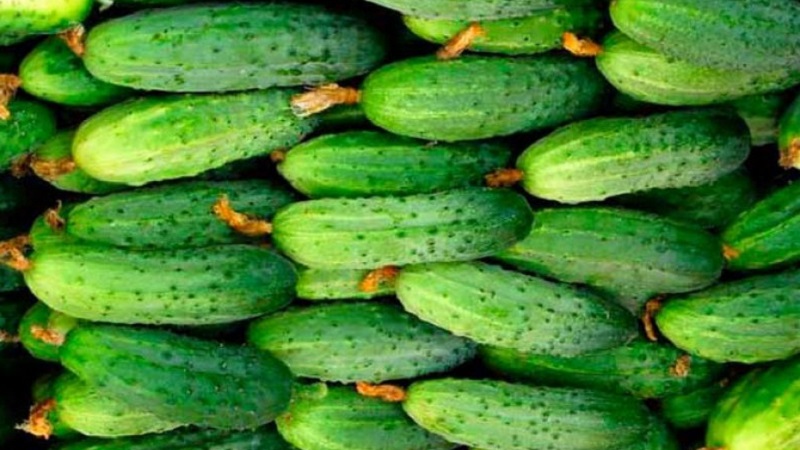
Fedor, Novosibirsk: “The hybrid is excellent, gherkin. Perfectly canned. And fresh cucumbers are good: the taste is pleasant, without bitterness. We are glad. The seeds sprouted in full, I did not even expect such a result ".
Conclusion
The Little Thumb Boy hybrid combines high and early yields, resistance to diseases and adverse factors, and excellent taste. Unpretentious care allows you to grow cucumbers not only in the open field or greenhouse, but also on the windowsill.